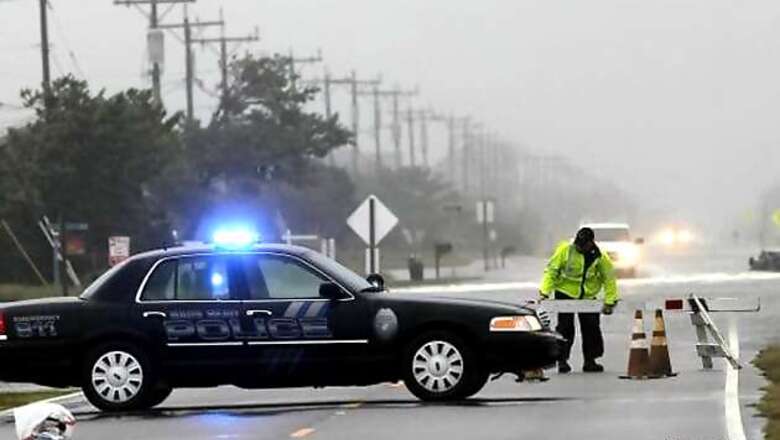
views
1. A Northbound Hurricane
Hurricane Sandy is moving slowly northeast and but is expected to turn to the north and west later Sunday and Monday, forecasters say. At some point, it's expected to become what's known as an extratropical storm. Unlike a hurricane, which gets its power from warm ocean waters, extratropical systems are driven by temperature contrasts in the atmosphere.
Although Sandy is a hurricane, it's important not to focus too much on its official category or its precise path (current models show it making landfall over New Jersey or Delaware sometime early Tuesday). Louis Uccellini, environmental prediction chief for the National Oceanic and Atmospheric Administration, told The Associated Press that given Sandy's east-to-west track into New Jersey, the worst of the storm surge could be just to the north, in New York City, on Long Island and in northern New Jersey.
Boston and Philadelphia should expect the worst storm conditions on Monday afternoon into Tuesday morning.
It's a massive system that will affect a huge swath of the eastern US, regardless of exactly where it hits or its precise wind speed. For example, tropical storm-force winds can be felt more than 500 miles from the storm's center, according to the National Hurricane Centre. It's already caused some minor flooding in North Carolina's Outer Banks and has prompted evacuations elsewhere. The Federal Emergency Management Agency has personnel and supplies spread as far west as the Ohio River Valley, said Craig Fugate, the agency's director.
2. Early winter storm
Sandy is expected to merge with a wintry system from the west, at which point it will become the powerful superstorm that has forecasters and officials across the eastern US. Winds from that system will pull Sandy back toward the US mainland.
3. Arctic air from the north
Frigid air coming south from Canada also is expected to collide with Sandy and the wintry storm from the west, creating a megastorm that is expected to park over the northeast for days. The brunt of the storm could hit areas farther inland. Officials are bracing for the worst: nearly a foot of rain, high winds and up to 2 feet of snow.
4. High tides could worsen flooding
Further complicating matters is the possibility for dangerous storm surges: A full moon means the tides will be higher than usual, which will make it easier for the storm's powerful winds to push water into low-lying areas. That, coupled with the threat of several inches of rain, has officials working to shore up flood defenses.
Storm surge could reach anywhere from 2 to 11 feet along the northeastern coast, forecasters say. Inland river flooding also is a serious concern.
5. Combo of snow, wind increases risk for widespread power outages
Storms in recent years have left hundreds of thousands of people in the eastern US without power, sometimes for days at a time. Utilities have been bringing in extra crews and lining up tree trimmers so they're prepared, and with good reason. The superstorm brings two possibilities for knocking out electricity. For one, hurricane-force winds of at least 74 mph could send tree branches into power lines, or even topple entire trees and power poles. Those left standing could succumb to snow, which could weigh down still-leafy branches enough to also topple trees.
Watch: Strong winds and heavy rain as Hurricane Sandy nears Hatteras Island####
Tweets about ”sandy, hurricane”
!function(d,s,id){var js,fjs=d.getElementsByTagName(s)[0];if(!d.getElementById(id)){js=d.createElement(s);js.id=id;js.src="//platform.twitter.com/widgets.js";fjs.parentNode.insertBefore(js,fjs);}}(document,"script","twitter-wjs");

















Comments
0 comment